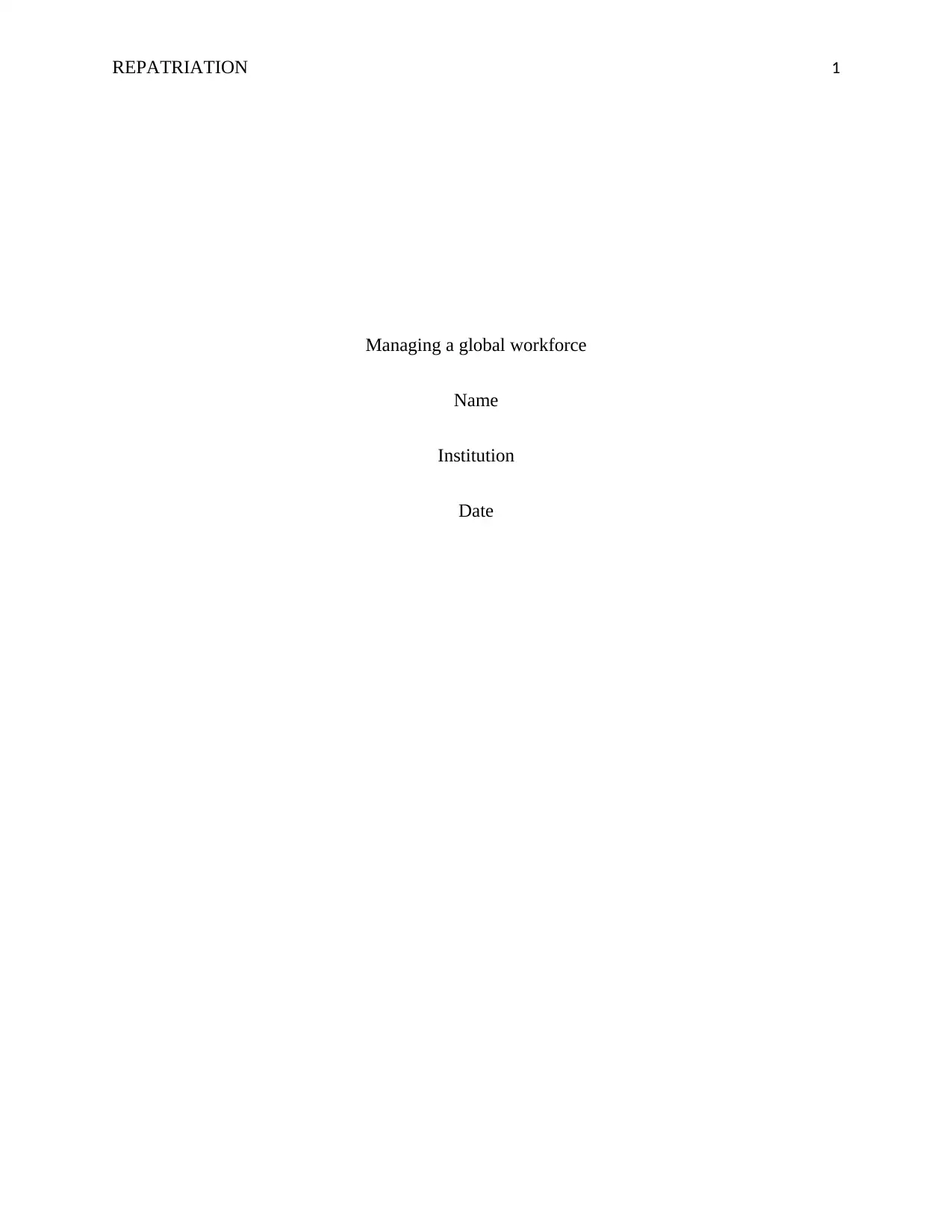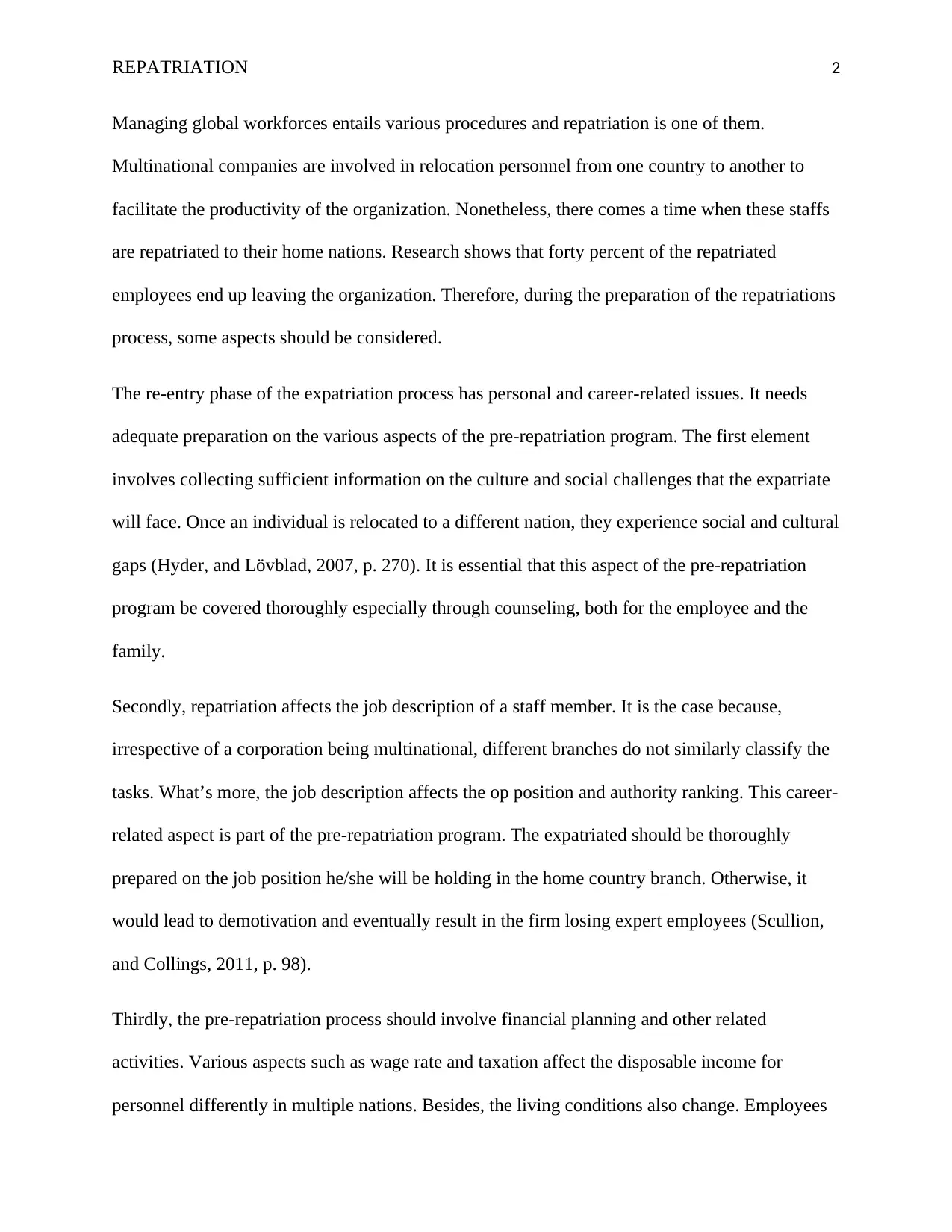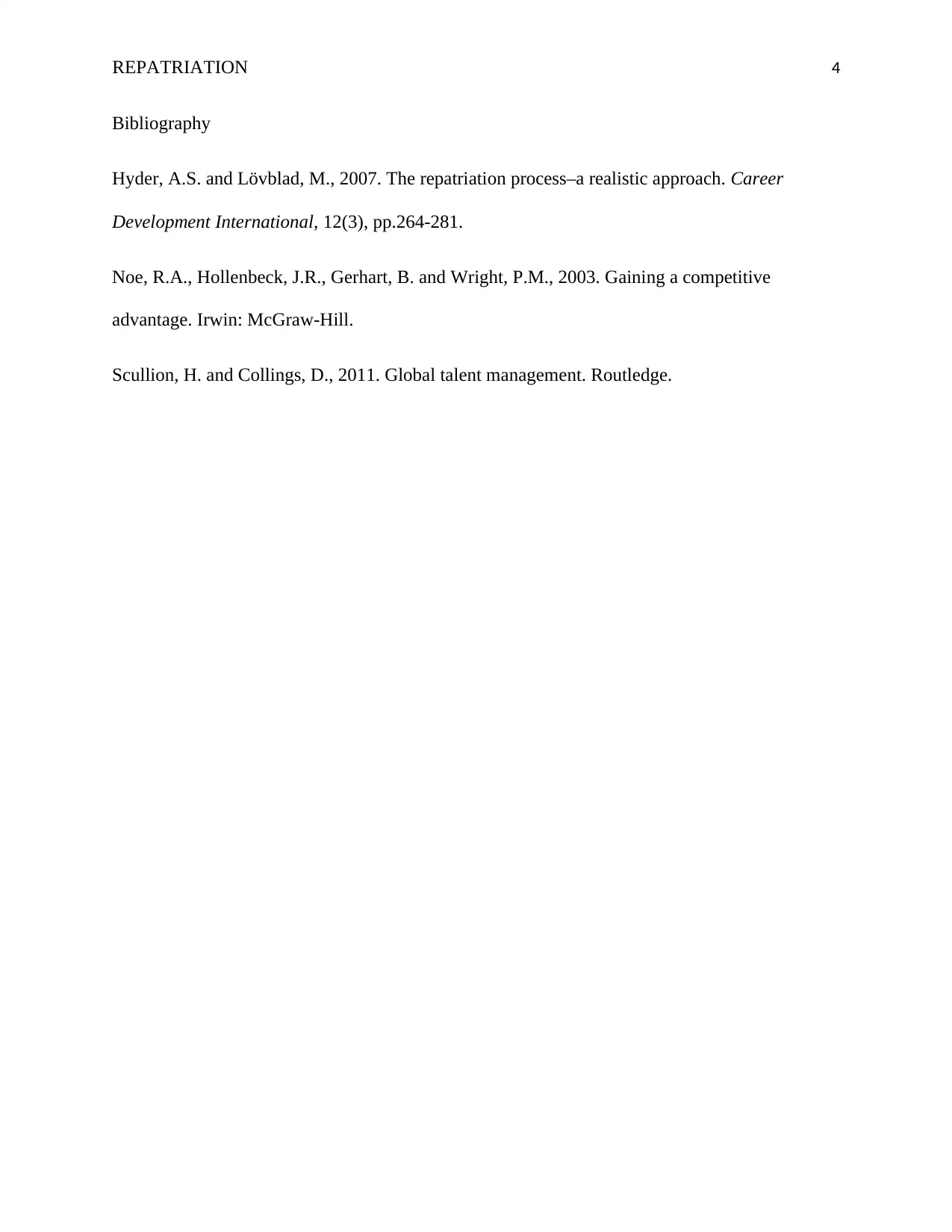Repatriation Strategies for Managing Global Workforce - Report
VerifiedAdded on 2020/05/08
|4
|445
|55
Report
AI Summary
This report delves into the critical process of repatriation within the context of global workforce management. It examines the challenges and considerations that multinational companies face when bringing expatriated employees back to their home countries. The report emphasizes the importance of pre-repatriation programs, highlighting the need to address cultural and social challenges, career-related issues, and financial planning. It discusses the impact of repatriation on employee job descriptions, the potential for demotivation, and the importance of providing adequate support and counseling. Furthermore, the report underlines the significance of financial planning, including wage rates and taxation, to ensure a smooth transition for repatriated employees. By addressing these key aspects, organizations can improve the success rate of repatriation and retain valuable talent.
1 out of 4





![[object Object]](/_next/static/media/star-bottom.7253800d.svg)